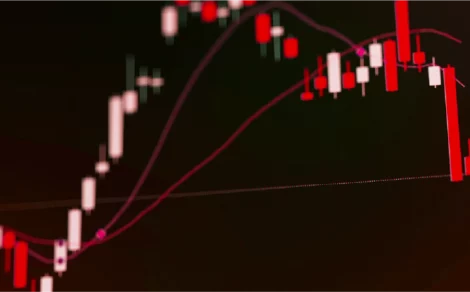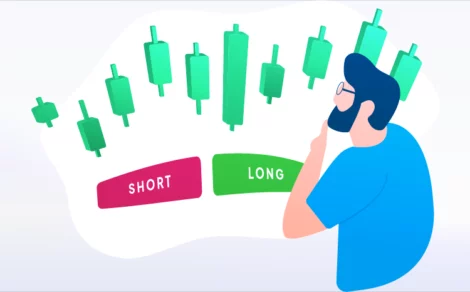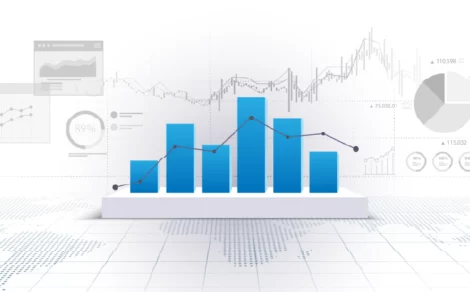Price action trading is a skill that can give traders a significant advantage in the fast-paced trading environment. Unlike conventional indicators, this technique only uses historical price action to make decisions. Whether you are a beginner or a seasoned trader, knowing this type of trading can help you create a favourable strategy and enhance market forecasts.
This blog explains what is price action trading, its mechanics, tools, techniques, advantages, and limitations to enable you to trade with confidence. Continue reading to realise the full potential of this strong trading strategy!
Understanding the Significance of Price Action Trading
Price action trading definition indicates a trading strategy that is oriented towards price movements instead of depending on indications or any other fundamental aspects. Moreover, traders learn patterns, trends, and important price points to make investment decisions.
One of the most important benefits of this type of trading is its simplicity. It simplifies trading by eradicating lagging indicators and allows traders to respond to current market action. So, whether you trade stocks, forex, or commodities, learning this trading enables you to make informed, strategic decisions without using sophisticated software.
The Mechanics of Price Action Trading
Price action trading operates based on interpreting raw market data, with a focus on price action without the use of other lagging indicators. Traders look at past price behaviour to make decisions, utilising tools like support and resistance levels, trend analysis, and candlestick patterns.
Support and resistance levels play a crucial role in helping traders identify key price points where buying or selling pressure is likely to be significant, often leading to price reversals or breakouts. By recognising these levels, traders can anticipate potential market shifts and make more informed decisions. Apart from this, candlestick patterns like Pin Bar, Engulfing, and Doji techniques tell us about the market sentiment and future price reversals.
Another key element of price action trading is analysing market context, where traders analyse past price behaviour to predict future movement. This approach allows traders to respond to current market situations instead of waiting for information from other indicators.
By paying attention to price action alone, traders can acquire a more instinctive knowledge of market behaviour, which results in better trade execution and accuracy. This type of trading is well established in day trading and swing trading, providing a versatile and efficient method applicable to many financial markets.
Advantages of Price Action Trading
There are various advantages of this type of trading, making it a favoured option among expert traders. Here are some of these advantages:
-
No Lagging Indicators
With its dependence on the real-time movement of prices, this type of trading offers more timely entry and exit points. This enables traders to make quicker, more informed decisions based on the current market behaviour, rather than waiting for delayed signals from indicators.
-
Flexibility
It can be applied in all types of markets, such as forex, stocks, commodities, and cryptocurrencies. Whether a trader is doing short-term scalping or long-term trend following, this type of trading is effective in different time frames.
-
Simple But Potent
As opposed to complex indicators, price action trading is straightforward to learn and apply. Traders can focus on fundamental market structures like candlestick patterns and price action, avoiding the complexity of multiple indicators while still benefiting from their effectiveness.
-
Improved Market Insight
Price Action Trading provides a deeper understanding of market psychology, helping traders interpret price movement and market sentiment. By recognising patterns in supply and demand, traders can predict future market actions with greater confidence and precision.
-
Increased Accuracy
With the ability to focus on key support and resistance levels, price action trading allows traders to make more accurate trade entries and exits. This improved precision enhances risk management and improves overall trade success by ensuring optimal entry and exit points.
Essential Tools and Techniques for Price Action Trading
Mastering these tools and techniques enables traders to become more efficient and accurate in price action trading. Even though this type of trading is based on raw price information, traders utilise some tools and methods to sharpen their approach:
-
Candlestick Charts
This tool is a pillar of this type of trading technique. Candlesticks reveal valuable information regarding market sentiment and allow traders to recognise potential reversals or continuations.
-
Support and Resistance Levels
This approach helps in the identification of strong price areas where assets are likely to reverse or consolidate and aids traders in determining entry and exit points.
-
Trendlines
Drawing trendlines enables traders to track market direction and spot breakout opportunities.
-
Chart Patterns
Popular shapes such as Head and Shoulders, Triangles, and Flags enable forecasting of market movements.
-
Price Action Signals
It helps in identifying prominent price action signals, including Pin Bars, Inside Bars, and Engulfing Patterns, and enables traders to confirm their market bias.
Popular Price Action Patterns
Patterns are a key element in understanding price action trading. Therefore, the identification of these patterns helps traders enhance their ability to predict market movements and place more profitable trades. Some of the most widely applied price action patterns are:
- Pin Bar: A candlestick pattern with a long wick and short body, signalling a possible reversal.
- Engulfing Pattern: It is a large candlestick that engulfs the prior one, showing strong buying or selling pressure.
- Inside Bar: A candlestick fully inside the prior one, signalling market indecision.
- Double Top and Double Bottom: Reversal patterns that signal strong support or resistance levels.
- Head and Shoulders: A trend reversal pattern that signals a possible reversal in market direction.
Challenges of Price Action Trading
Though this trading method provides several advantages, it is also accompanied by drawbacks that traders have to overcome to attain sustained profitability. Following are some of the most prominent challenges to overcome for enhancing trading decision-making:
-
Subjectivity
Various traders interpret the price movement differently, which can result in different conclusions about future trade opportunities. Subjectivity, particularly among new traders, might occasionally cause irregular decision-making.
-
Market Noise
Prices can produce deceiving signals as they swing unpredictably, hindering the identification of real trends and temporary volatilities. If well scrutinised, the latter might give rise to premature entries and exits.
-
Emotional Trading
As trading strategies are discretionary, emotional biases can influence decision-making, resulting in impulsive action rather than a systematic plan. Moreover, fear and greed can result in poor risk management and avoidable losses.
-
Needs Practice
It takes time, discipline, and ongoing learning to master price action trading techniques because the trader has to learn to read charts properly and adjust to varying market scenarios. Without diligence and comprehensive understanding, traders are not likely to be profitable in the long run.
-
Risk of Overtrading
Price data is widely available, which may encourage traders to overtrade and expose them to expensive transaction charges. Hence, strict trade selection criteria must be employed to prevent unwanted losses.
Steps to Begin Price Action Trading
If you are ready to begin trading following this method, follow the steps given below:
-
Step 1: Learn the Basics
Learn what is price action trading and become familiar with essential concepts.
-
Step 2: Select Your Trading Market
Determine if you wish to trade forex, stocks, commodities, or cryptocurrencies.
-
Step 3: Master Candlestick Patterns
Learn to recognise bullish and bearish candlestick patterns.
-
Step 4: Recognise Key Levels
Label support and resistance levels on your trading chart.
-
Step 5: Create a Trading Plan
Set clear entry, exit, and risk management rules.
-
Step 6: Practice on a Demo Account
Before risking actual money, practice in a risk-free environment.
-
Step 7: Execute Live Trades
After you feel confident, begin trading using real capital but with good risk management.
Final Words
Mastering price action trading involves patience, practice, and a keen sense of understanding market behaviour. Also, focusing on price movement, significant patterns, and key techniques helps traders refine decision-making capabilities and increase profitability. As a beginner or an experienced trader, using this trading approach can greatly enhance trading performance.
Ready to elevate your trading game? Explore Torus Digital today and open a FREE demat account to get started on the price action trading journey!








